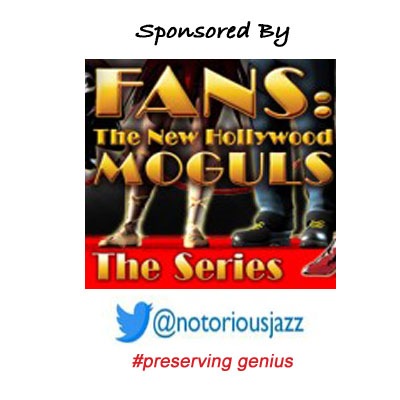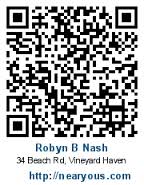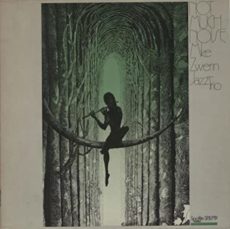
Daily Dose Of Jazz…
Mike Zwerin was born in New York City on May 18, 1930, where he studied at the High School of Music and Art. He began leading bands in his teens, employing several up-and-coming musicians. He went on to attend the Univerity of Miami and after graduation, he went into his father’s business, the Capitol Steel Corporation.
At the age of 18, while on his summer holidays from the University of Miami, he was spotted by Miles Davis at Minton’s in Harlem, while sitting in with Art Blakey. He was immediately drafted into the rehearsal band for what would become immortalized as Birth of the Cool, while the regular trombonist Kai Winding was indisposed. Also present were Gerry Mulligan, Max Roach, and Lee Konitz. His contribution, in particular, his solo on the track Move, can be heard on The Complete Birth of the Cool. A few muddy recordings exist of radio broadcasts by the band during Zwerin’s time in it, which gave him a lifelong reputation as a jazz musician lucky enough to have been at the cutting edge of a new movement.
Abandoning his musical life for much of the 1950s and after a spell in France, he returned to New York in 1958 and played the trombone in several big bands. Among his other recordings are Getting Xperimental over U, and Mack the Knife, an album of Kurt Weill songs that he produced and arranged himself. He also appears on Archie Shepp’s 1968 album The Magic of Ju-Ju.
Before moving permanently to Europe in 1969, he was a jazz critic for the Village Voice and focusing on journalism, writing for Down Beat, Rolling Stone, and Penthouse before joining the Herald Tribune. Zwerin’s move to London, England in 1969 and then to Paris, France in 1972, would be his home for the rest of his life. Nevertheless, he kept his hand in as a trombonist throughout the 1980s, working with his fellow expatriate Hal Singer and with the guitarist Christian Escoudé. In 1988 he toured with the Charles Mingus Big Band, having played briefly with the Swiss bandleader George Gruntz and played with the French fusion band Telephone.
Zwerin’s lasting claim to fame, however, is, perhaps, not his trombone playing but his book La Tristesse de Saint Louis: Swing Under the Nazis (1985). He spent two years researching it, traveling across France, Austria, Poland and Germany to interview survivors and unearthing the story of how jazz was banned by the Nazis as degenerate music, and yet somehow survived as what Zwerin called a metaphor for freedom.
Cool and progressive jazz trombonist and bass trumpeter Mike Zwerin passed away on April 2, 2010 after a long illness in Paris at the age of 79.
More Posts: bandleader,critic,history,instrumental,jazz,music,trombone,trumpet
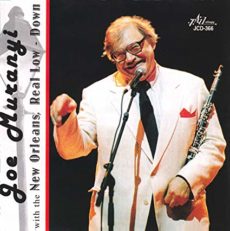
Daily Dose Of Jazz…
Joseph P. Muranyi was born in Martins Ferry, Ohio on January 14, 1928 and studied with Lennie Tristano, however, he was primarily interested in early jazz styles such as Dixieland and swing. After playing in a United States Army Air Forces band, he moved to New York City in the 1950s and attended the Manhattan School of Music and Columbia University.
During the 1950s he played under Eddie Condon, collaborating with Jimmy McPartland, Max Kaminsky, Yank Lawson, Bobby Hackett, and Red Allen. During that decade he also played with the Red Onion Jazz Band, Danny Barker, and Wingy Manone.
1963 saw him playing with The Village Stompers, a Dixieland band that reached the pop charts with its song Washington Square. From 1967 to 1971 he was the clarinetist with the Louis Armstrong All-Stars. After initially struggling to pronounce Muranyi’s Hungarian family name, Armstrong introduced him on stage as “Joe Ma Rainey”, to Muranyi’s own amusement. Following this stint, he played with Roy Eldridge, World’s Greatest Jazz Band, Cozy Cole, Lionel Hampton, Herman Autrey, Wild Bill Davison, Zutty Singleton, and others.
He worked extensively as a record producer and wrote liner notes for hundreds of albums. Clarinetist, producer, writer and critic Joe Muranyi, who was also an enthusiastic vocalist and played both soprano and tenor saxophone, passed away in Manhattan, New York on April 20, 2012.
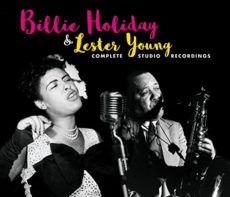
Daily Dose Of Jazz…
John Hammond Sr. was born into a wealthy family on December 15, 1910 in New York City. Educated at Yale, he had a great love for Black music and as early as 1933, at 22, he was active in the music business, discovering Billie Holiday and getting her into the recording studio, producing Bessie Smith’s final sessions, and becoming a friend of young Benny Goodman. One of swing music’s greatest propagandists, he was responsible for at least partly discovering a remarkable list of musicians through the years making their rise to fame much more swift.
Hammond was a masterful talent scout, producer, promoter, and an early fighter against racism, he produced freewheeling American jazz sessions for the European market, worked with Fletcher Henderson and Benny Carter, and encouraged Goodman to form his first big band. In 1935 he teamed Lady Day with pianist Teddy Wilson for a series of recordings, and the following year he discovered Count Basie’s orchestra while randomly scanning the radio dial. He then flew to Kansas City, encouraged Basie to come East and in 1938 and 1939 he organized the famous “Spirituals to Swing” all-star Carnegie Hall concerts.
After hearing about Charlie Christian in 1939, he flew out to Oklahoma City, Oklahoma to listen to the young guitarist and flew him to Los Angeles, California where he had set up an audition for an initially reluctant Goodman. In addition to his work as a promoter and a record producer, most notably for Columbia during 1937-1943, John was a jazz critic.
After World War II military service felt misplaced in the jazz scene of the mid-’40s, never gaining a taste for bebop. However, by the Fifties he produced a superior series of mainstream dates for Vanguard featuring swing era veterans. Hammond worked through the years for Keynote, Majestic, and Mercury, and during 1959-1975 he was again a major force at Columbia, where he helped the careers of Bob Dylan, Aretha Franklin, George Benson, Bruce Springsteen, and Adam Makowicz, among others.
1967 saw him organizing a new “Spirituals to Swing” concert, and in 1977 his autobiography John Hammond on Record was published. Producer, promoter, critic and talent scout John Hammond Sr. passed away on July 10, 1987 in New York City.
More Posts: critic,producer,promoter,talent scout
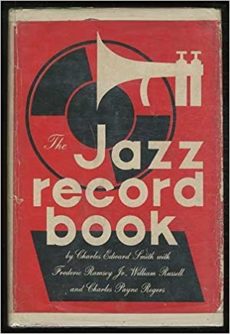
Daily Dose Of Jazz…
Charles Edward Smith was born June 8, 1904 in Thomaston, Connecticut and began collecting Hot Records from early jazz in the 1920s. He worked with William Russell, Eugene Williams, John Hammond, Hugues Panassié and Charles Delaunay in the Hot Record Society from 1937, from which the jazz label HRS Records was established. Along with Steve Smith, he was editor of the jazz magazine Hot Record Society Rag.
Smith was among the early representatives of jazz criticism in the 1930s, having published essays in journals such as the Symposium, The Daily Worker and Esquire. He published the book Jazzmen with Frederic Ramsey in 1939 and was one of America’s first jazz books along with Wild Hobson’s American Jazz Music.
He wrote articles on groups like the Austin High School Gang as well as interviews with early jazz musicians like Willie Cornish, Papa Jack Laine, Leon Roppolo and Nick LaRocca. With the 1942 The Jazz Record Book, an attempt was made to list a canon of important jazz records, which prompted future writers to produce further books such as Marshall Stearns’ The Story of Jazz, Joachim-Ernst Berendt & Günther Huesmann’s Jazz Book, Barry Kernfeld’s Encyclopedia of Jazz and Allen Lowes That Devilin’ Tune.
Charles also wrote for The New Republic, the magazine Jazz Information and a series of liner notes from folk music albums, folk blues and early jazz players such as Pee Wee Russell, Jelly Roll Morton as well as modern jazz musicians Al Cohn, Miles Davis/Milestones, Chico Hamilton/South Pacific in Hi-Fi and J.J. Johnson/Dial JJ 5. He also wrote the accompaniment text for the LP edition of John Hammond’s Concert Series, From Spirituals to Swing – Carnegie Hall Concerts, 1938/39 on the Vanguard label.
Author and critic Charles Edward Smith, who is considered one of the early serious jazz critics, passed away on December 16, 1970 in New York City.
Sponsored By
#preserving genius
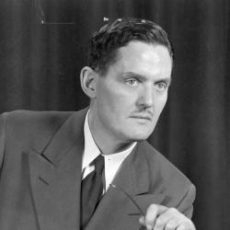
Daily Dose Of Jazz…
Marshall Winslow Stearns was born on October 18, 1908 in Cambridge, Massachusetts. He played drums in his teens, and attended Harvard University both for undergraduate and for law school. Following this he studied medieval English at Yale University, where he took his Ph.D. in 1942.
Stearns went on to teach English at several U.S. colleges and during this time wrote often about jazz music for magazines such as Variety, Saturday Review, Down Beat, Record Changer, Esquire, Harper’s, Life, and Musical America. Receiving a Guggenheim Fellowship in 1950, he used the proceeds to finish his 1956 work The Story of Jazz, which became a widely used text, as well as a popular introduction to jazz.
He began teaching jazz at New York University in 1950 and then at Hunter College from 1951. In 1952, Marshall founded the Institute of Jazz Studies, which he directed. He became a consultant in the 1950s to the United States State Department, and accompanied Dizzy Gillespie on a tour of the Middle East in 1956 sponsored by the office. He taught at the New School for Social Research from 1954 to 1956 and the School of Jazz in Lenox, Massachusetts.
Jazz critic and musicologist Marshall Stearns, who along with his second wife, Jean, wrote a second book, Jazz Dance, which was published posthumously in 1968, passed away on December 18, 1966 in Key West, Florida.
Sponsored By
![]()
More Posts: author,critic,musicologist




